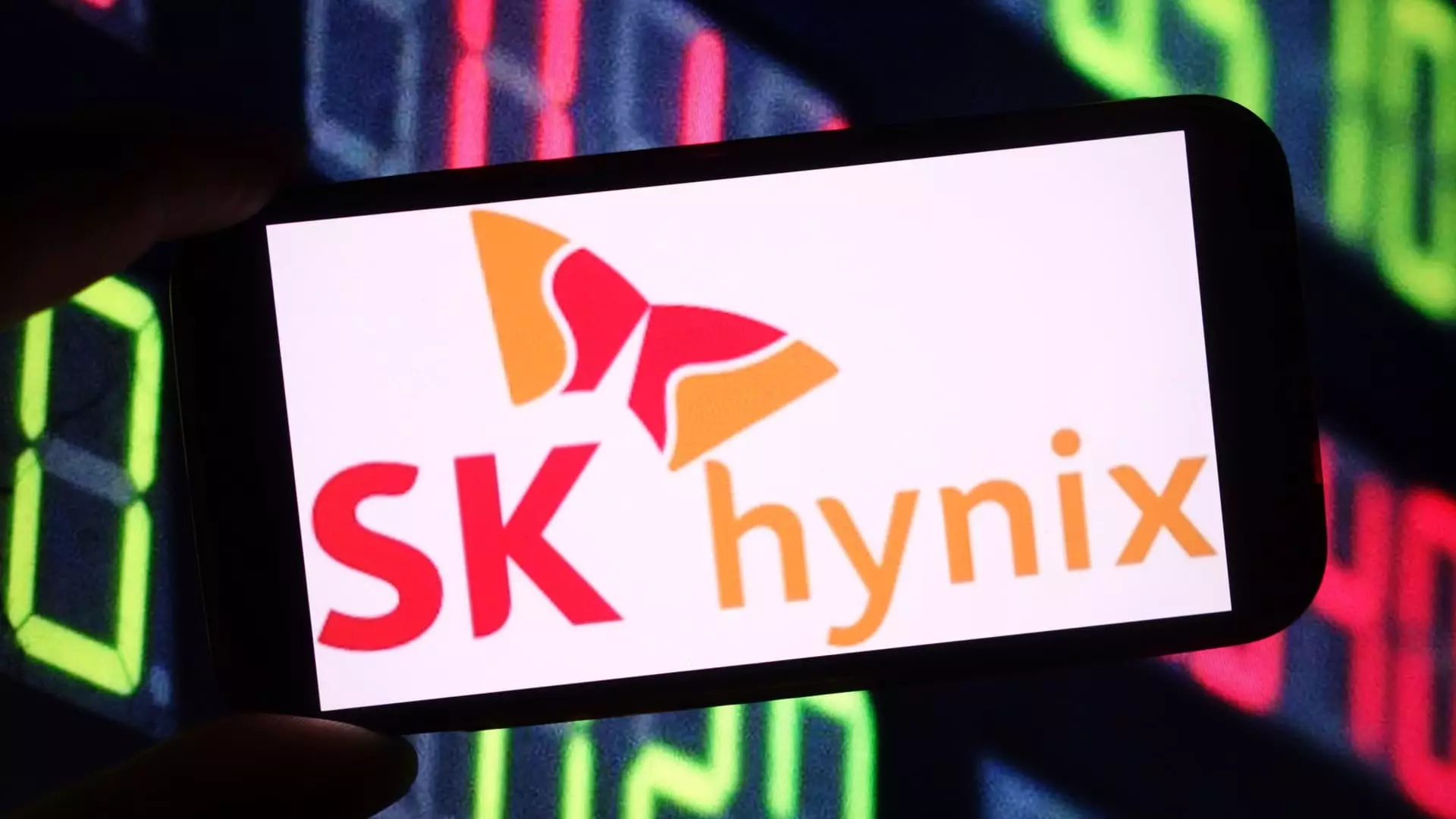In a stunning display of financial prowess, South Korea’s semiconductor giant SK Hynix announced a remarkable performance for the first quarter of the year. With revenue reaching 17.64 trillion won (approximately $12.36 billion), the company’s figures surpassed analysts’ projections of 17.26 trillion won, leading to a revenue increase of 42% year-on-year. This astounding growth is largely attributed to the company’s specialization in high bandwidth memory (HBM) products—critical components used in artificial intelligence (AI) chipsets. Moreover, their operating profit soared to 7.44 trillion won, smashing the prior estimate of 6.62 trillion won. This 158% leap in operating profits compared to the previous year illustrates not just growth, but a burgeoning dominance in a market increasingly driven by AI technology.
The Future of Memory Technology
SK Hynix’s place as a leading supplier of dynamic random access memory (DRAM) solidifies its position as an essential player in the tech ecosystem. The company’s memory chips are foundational in a wide array of devices, from personal computers to sophisticated servers, and their prominence in AI chipset development cannot be overstated. Nevertheless, SK Hynix faces challenges ahead, particularly in the face of macroeconomic uncertainties. Concerns loom regarding potential U.S. tariff policies, which could inject volatility into demand, especially as market conditions shift.
Despite these headwinds, SK Hynix remains resilient. The company has expressed confidence that recent tariffs will have a limited impact on its artificial intelligence server demand. The resurgence of consumer electronics—particularly due to the incorporation of AI features in new product launches—could provide a vital counterbalance to any potential downturns. Indeed, the anticipated electronics refresh could be a major growth catalyst for the HBM market.
AI Revolution Driving Demand
The earnings report highlighted the catalyzing effect of AI on the memory market. With AI initiatives on the rise, driven by decreasing development costs and emerging open-source models, SK Hynix finds itself at the heart of this transformation. During an earnings call, company executives underscored their expectations that spending from major technology firms on AI will continue unabated. Innovations like DeepSeek’s open-source R1 reasoning model showcase how advanced AI functionalities can be achieved without enormous infrastructure—another indicator of the burgeoning demand for high-performance memory solutions.
As SK Hynix comments on the overall excitement around AI-driven growth, their strategic positioning is particularly bolstered by significant partnerships with industry leaders, notably firms like Nvidia. By capturing 70% of the HBM market’s revenue share, the company solidifies its role as a dominant player. This level of market capture is no small feat when you consider the competition present in the field from other heavyweights like Micron Technology and Samsung Electronics.
The Road Ahead
While the first quarter of this year positions SK Hynix favorably amidst an AI boom, it is essential to remain cognizant of the potential pitfalls ahead. The tech industry is notoriously cyclical and sensitive to external factors, and while domestic trends appear promising, global tariff discussions could reshape market dynamics. The SK Hynix executive’s caution surrounding tariff risks reveals an awareness of these potential headwinds.
The burgeoning AI market presents unique opportunities and challenges. As demand for high bandwidth memory surges, SK Hynix must continuously innovate and adapt to maintain its competitive edge. Their success in leveraging open-source developments provides an avenue through which they can ride the wave of AI growth effectively. The balance between navigating external economic challenges while fostering internal innovation will be crucial moving forward.
SK Hynix stands on the precipice of a transformative age within the semiconductor industry. Their results not only reflect immediate success but also hint at a larger narrative of growth driven by technology’s relentless march toward AI-powered systems. The interplay of economic conditions, technological advancement, and consumer demand will dictate the next chapter in SK Hynix’s story, as they strive to lead the way in dynamic memory solutions that power the future.

